(1).jpg)
"WOE TO THE ENEMIES OF THE REVOLUTION!" What Was The People’s Reaction To The Kemalist Revolutions?
Because they are the product of an ideology or imposed by a leader, revolutions have as many opponents as supporters—perhaps even more opponents. But amidst the enthusiasm of the revolution, the opposition cannot make its presence felt.
A Maiden-like Assembly
The Kemalist revolutions took place at a convenient time, immediately following a political and social crisis, carried out by the parliament formed in the 1923 elections, which, in the words of Mustafa Kemal Atatürk (İsmail Habip Sevük, Atatürk İçin “For Atatürk”, p.53), was “a maiden-like assembly.” However, the real architect was “a military hero.”
Atatürk is one of the greatest revolutionaries that history has produced. He succeeded in portraying the revolutions not merely as the product of an ideology, but as the result of necessities. Yılmaz Öztuna cleverly states: “He did not carry them out directly, but sought to legitimize them through parliament, even if only symbolically; moreover, always mindful of the danger that they might weigh heavily on the conscience of a people who had possessed an empire and fought for religion for centuries, he knew how to continually flatter national pride by emphasizing Turkishness.” (Türkiye’s Situation, Hayat Tarih Mecmuası, “Hayat History Magazine”, January 1974)
Thus, the country witnessed changes that had been unimaginable just a few years before. Even the Young Turks, who laid the foundation of the revolutions, probably did not anticipate this extent. The circles that sought to transform Ottoman society had not envisioned such a bloody purge. Arnold Toynbee says: “Revolutions compressed three centuries of European modernization into the lifespan of a single individual and made it compulsory by law.” (The World and the West, p. 41)
The reaction to the revolution dates back to the early years of the Ankara movement. Seen as a new maneuver by the Unionists (Young Turks) against the authority of the sultan, this attempt was met with uprisings in many parts of Anatolia, particularly in Urfa, Yozgat, Konya, Bolu, Adapazarı, and Gönen.
The justification for the uprisings was Ankara’s demand for new taxes and soldiers from a war-weary and exhausted population of a ruined country. However, these movements, lacking serious organization and material strength, were suppressed in a bloody and difficult manner.
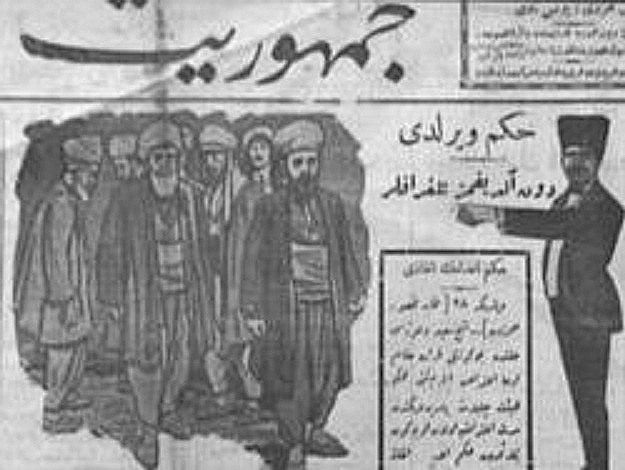
After the victory, the first reaction to the revolutions came from Atatürk’s close circle. These were not reactionary figures. However, they regarded the revolutions as contrary to the national body and believed the regime was sliding into dictatorship. These opponents were politically purged.
The conservative press and intellectuals in Istanbul, who had already scoffed at Ankara during the Greek War and now criticized the revolutions, were brought into line through the İzmir assassination attempt against the then president Mustafa Kemal and the subsequent Sheikh Said incident. Even Mustafa Kemal Pasha, who had previously refrained from coming to Istanbul, was able to visit the city for the first time in 1927 thanks to this quieting of dissent.
No matter how idealistic they may appear, revolutions, due to their lack of legitimacy, are met with reluctance or even resistance from the public, resulting in civil war. To bring the public into line (to collect taxes and soldiers), it must be shown that this is no joke. This is done through violence. Compared to what the Bolsheviks did, one could say the Turks got off lightly.
The people’s reaction to the revolutions remained weak. Few have analyzed this from a socio-psychological perspective. It can be explained by the traditional culture of obedience; the inevitable silence of a tired, exhausted population; the effect of serious propaganda against the old order; and the support of Europe for the revolutions.
The Unionists had established a broad and powerful organization across the country. When they joined the Ankara movement, they used this power. The opposition was never as strong. The only power capable of organizing a revolt—the religious scholarly class (ilmiye)—had already been suppressed during the Constitutional period. In this respect, the Kemalist revolution is indebted to the Unionists.
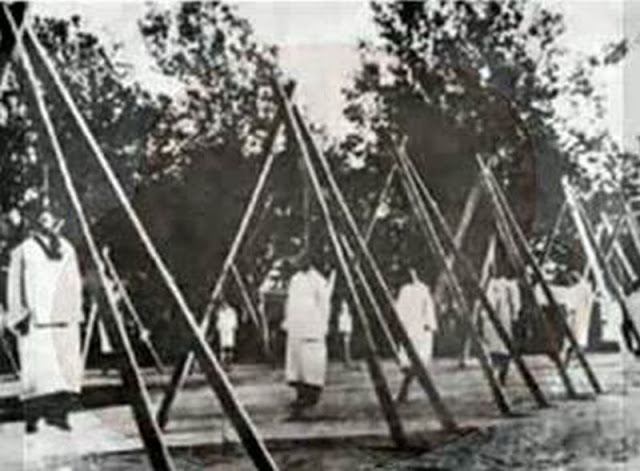
Culture of Obedience
The abolition of the sultanate and then the caliphate, along with the exile of the Ottoman dynasty, did not provoke much reaction. The descendants of Osman Ghazi, who had not expected such from the public, were very surprised. Although there were stirrings in Silifke, Reşadiye, Bursa, Adapazarı, and Konya, they were suppressed with harsh measures.
Little attention was paid to the 1926 civil code revolution, which completely abolished sharia law. Nor was there serious opposition to the alphabet revolution, which eliminated the Turkish people's thousand-year-old script and should have dealt a heavy blow to traditional culture. It is only told that former deputy Seyyid Taha Efendi, upon hearing of the reform, said, “I wish they had just hung a cross around the people’s necks instead of doing this. The nation will lose its religion,” after which he suffered a stroke and died.
However, despite not affecting religious life as much, the hat revolution provoked a surprising reaction. Uprisings in cities such as Konya, Rize, Erzurum, Sivas, Kayseri, Maraş, Erbaa, and Giresun were bloodily suppressed; the Hamidiye cruiser bombarded Rize from the sea. Dozens of men wearing turbans were hanged as a lesson to others; even İskilipli Atıf Efendi, a former professor, was executed for a book he wrote long before the revolution, titled "Frenk Mukallitliği ve Şapka" (Westernization and the European Hat), using retroactive laws. The people of Rize submitted, saying, “Don’t shoot Hamidiye, don’t shoot, we are your fellow believers / We will wear the hat, we will pay the tax.”
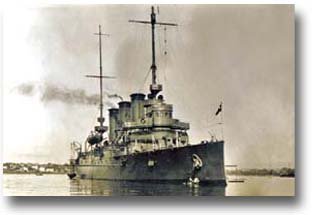
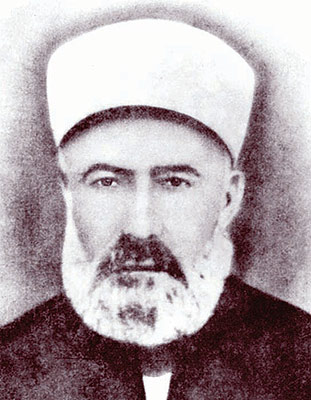
In Ottoman history, when one speaks of reform, Sultan Mahmud II first comes to mind. He ordered civil servants to wear fezzes, jackets, and trousers but did not interfere with the dress of the scholarly class or the public. Even though this was not an ordinary imitation of Europe but a reform suited to the national body, he could not escape being branded a “Gavur Padişah” (infidel sultan) by some groups.
People are preoccupied with appearances. In Islamic culture of that time, headgear had significant importance. Religious books equated wearing a hat with apostasy. It was customary to call Europeans “Şapkalı Gavur” (Hat-wearing Infidels) to emphasize their infidelity. Aside from this, the serious uprising in Bursa against the Arabic call to prayer ban of 1932 was halted by military intervention.
Every revolution has taken measures to suppress its opponents. This happened in France, Russia, China, and Germany as well. Inspired by the French Revolutionary Tribunals of 1793, Ankara established revolutionary tribunals (İstiklal Mahkemeleri) in various cities in 1920. These were tasked with tracking deserters and punishing those among the Anatolian people who opposed the Ankara movement.
These courts, whose judges were not lawyers but selected from among deputies and were directly answerable to the speaker of the assembly, tried 83,000 suspects over seven years, punishing 50,000 people, including 4,500 with death sentences. The tens of thousands of villagers destroyed during operations to suppress Kurdish uprisings—reactions to the revolutions—are not included in this number. Even rebellious cities such as Bursa and Yozgat were punished by being deprived of investment. The wisdom of avoiding referendums and not establishing a democratic parliament was thereby confirmed.
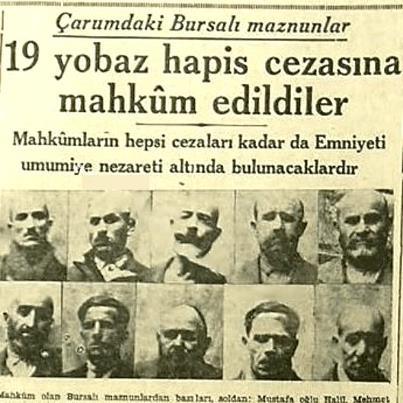
Önceki Yazılar
-
THE FIRST UNIVERSITY IN THE WORLD WAS FOUNDED BY MUSLIMS3.12.2025
-
WHO BETRAYED PROPHET ISA (JESUS)?26.11.2025
-
IT HAS BEEN MORE THAN 100 YEARS SINCE ITS ABOLITION, BUT... IS THE CALIPHATE BEING REESTABLISHED?19.11.2025
-
GREETINGS TO YOU, O OTTOMAN SANJAK!…12.11.2025
-
ROTHSCHILDS BROUGHT THE END OF THE OTTOMAN EMPIRE!5.11.2025
-
SHEIKH BEDREDDIN, SON OF THE QADI OF SIMAVNA29.10.2025
-
THE ROOTS OF THE ENGLISH POLITICIAN IN TURKEY – THE TRAGIC END OF ALI KEMAL BEY22.10.2025
-
WHERE IS THE RED APPLE?15.10.2025
-
THE ABBASIDS IN ANATOLIA1.10.2025
-
IMAMS AND MUFTIS AS OFFICERS IN THE OTTOMAN ARMY24.09.2025